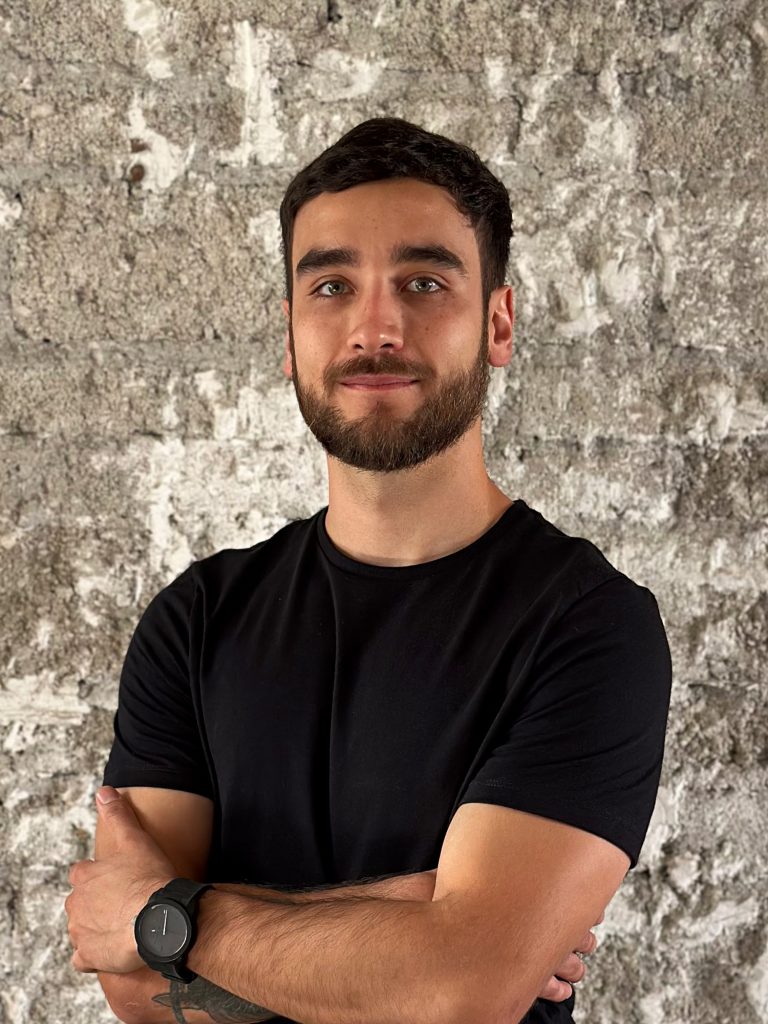

ABOUT THE AUTHOR
Carlos Maximiliano Galván Pasquel Architect, Creative Project Leader
“Architecture is the means through which we can think, transform and inhabit cities more efficiently, putting the environment and the human being spotlight.”
In recent decades, many cities around the world have grown around a car-centred model. However, later events such as the increase in oil prices, climate change, pandemics and the search for healthier lifestyles, produced the automobile–based system to be questioned. Although the car has been shown as an extraordinary invention that revolutionized the world, it brought us other problems: mainly, the time we spend moving around. We move faster, but not more efficiently. In other words, in the search for a better quality of life, we should allocate less time to daily commuting, and travel more comfortably (without traffic, and pollution) and with less consumption of resources.
Urban movility
To understand the subject, it is necessary to define the concept of urban mobility, which we understand as the movement of people in cities, whether using public transport, car, bicycle or by foot.
Among the main problems that cities face, in terms of urban mobility, are traffic, the use of fossil fuels and the excessive growth of urban sprawl.

City growth
Since the beginning of the 20th century, cities with large urban plans, such as New York, have been growing with Robert Moses’ city model, where the city is built from large infrastructures, skyscrapers, and communication routes where the car was the protagonist. Thanks to the invention of the automobile, many cities grew following this model, such as Los Angeles in California, which we can easily recognize by its great road infrastructure. The problem of these cities lies in disproportionate growth, which generates increasingly dispersed and disintegrated territories.
On the other hand, other models are committed to urban vitality, which we can understand as the quality of a city being full of life.
Jane Jacobs, a renowned activist, and urban theorist developed her theory based on the concept of places that can gather different types of people and different types of activities.
Jacobs mentioned that for this vitality to be achieved, 6 conditions must be met: 1) The first is concentration. This occurs when there is a density of people and houses ‘life on the street’ can be produced. 2) The second condition is diversity, cities have to bring together different types of activities and people, by having places to work, shops, schools, facilities, and all those elements nearby. 3) The third condition is the need for buildings with different characteristics so that families with different acquisition capabilities can access housing; 4) Fourth condition is the opportunity for contact, that is, cities made on a human scale, in blocks or blocks that are not too large because this reduces intersections and corners, losing the opportunity to establish different programs that make people stay in contact; 5) Fifth is the condition of accessibility, moving around in more sustainable transport, walking, riding a bicycle, etc. Not relying so much on the car and having a transport network that communicates the regions with greater equidistance. 6) The sixth condition is to avoid boundary elements. Jacobs understood these elements as places that discourage the use of the street, such as roads, single-use equipment, large shopping centres, unsafe parks, and impervious places that do not allow going from one side to the other, that is, borders for the vitality.
A space problem
The main problem of cities is space. In this way, it is currently possible to distinguish three central actors in its planning processes: the State, civil society, and the private sector (Roitman, 2008).
In Mexico, The Origin-Destination Survey (EOD), the main source of information regarding mobility, reports that takes 64 on average to commute on our daily activities, indicative that greater infrastructure does not fully impact greater efficiency. Currently, we occupy too much space in the territory of our cities to build bridges, highways, streets, and avenues. Despite this growth in road infrastructure, the time we dedicate to daily commuting has not decreased and we have not improved people's satisfaction with moving within the city.
City of short distances
How we move in the city has a huge impact on economic and environmental sustainability, as well as on social cohesion and the quality of life of the inhabitants. The challenge of mobility is to move as many people as efficiently as possible while occupying as little space as possible.
Thinking of models that we can call ideal for an alternative model of transport and friendly design for pedestrians, it is the model of the 'Next city', or 'City of short distances'. It is the city where our home and our daily activities such as work, study, sports, leisure, and health are nearby activities, that is, within a walking or bicycle radius.
Proximity has benefits in many ways, on the one hand, reducing the use of motorized vehicles, promotes social cohesion, returns to community life, and recovering public space as a meeting place and not as a transit place.

Illustration by
Carlos Maximiliano Galván Pasquel
Conclusion
Proximity within the urban environment frees the streets and transforms them into meeting spaces. It is important to change the paradigm of how we should move and live in the city and how to design cities to generate these alternative means of transport and friendlier spaces. As a result, many cities have adapted and sought to promote cycling and make streets more pedestrian-friendly.
References: Roitman, Sonia. urban planning and social actors involved: the development of gated communities. Ten years of changes in the World, in Geography and the Social Sciences, 1999-2008. Proceedings of the X International Colloquium on Geocriticism, University of Barcelona, May 26-30, 2008 <http://www.ub.es/geocrit/-xcol/78.htm>
Want to know more about this topic?
Contact us
